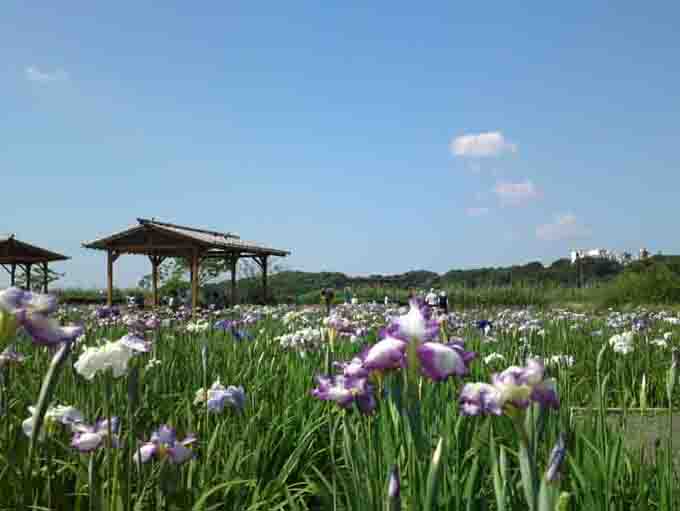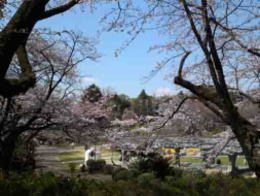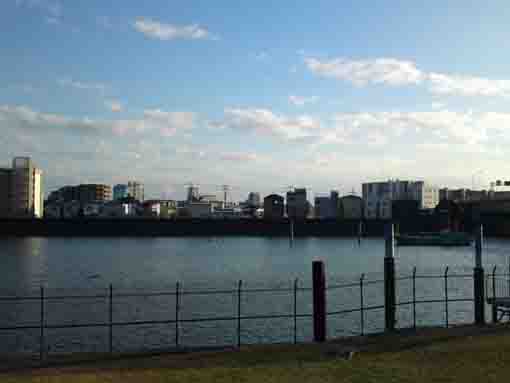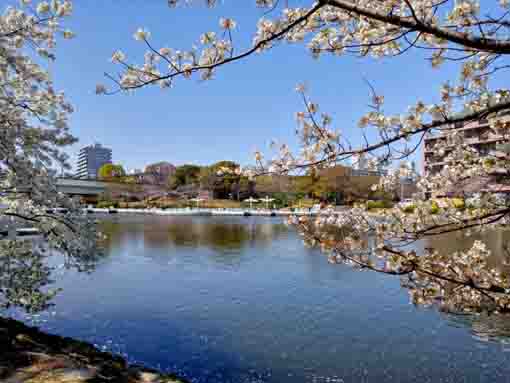Nakayama is in between Narita And Haneda International Airport
<クッキーについての同意並び欧州居住者向けプライバシーポリシー>
中山・下総・散歩道
Koiwa Ichikawa Sekisho (the Barrier at Koiwa and Ichikawa)


The remains of the barrier at Ichikawa stood on the bank of Edogawa River near the provincial government of Shimousa existed since the river had been called Futoigawa River. The barrier at Ichikawa as well as at Imai and Yagiri were controlled by Edo Bakufu in Edo period. A barrier is a ferry at that time. The barrier in late Meiji Era were described in 'Nakayama Dera' an essay written by Kyoshi Takahama and 'Nogiku no Haka' a romance by Sachio Ito. In Nakayama Dera, a young man Kyoshi got on a ferry to cross Edogawa River and ate a parcimon when he walked to his home at Hongo in Tokyo. In Nogiku no Haka, the hero of the story Masao used a ferryboat from Yagiri to Ichikawa.
Over 1000 years, several millions of people passed through the barrier, so the remain of the barrier at Ichikawa shows the visitors its history. Why don't you visit the remain of the barrier at Ichikawa?
The Remain of The Barrier at Ichikawa
Before Edo period, Edogawa River had been called Futoigawa River. There was Igami no Umaya (a horse barn at Igami) put by Government in Nara and Heian Period and officers from the central government changed their horses and got on boats to cross the river when they were on the way to Shimousa Province. And Socho, a renga poet in Muromachi Period, wrote in his work 'Azumaji no Tsuto' that he got on the ferryboat from Ichikawa to cross the river. It showed that many people had come to cross the river here in this port.When Edo Bakufu started, the Bakufu established many Jo Funaba (legal barriers) along some rivers in Kanto Region to check travelers at ferry to protect Edo. Since the ferry had existed then, the Bakufu established the barrier at Ichikawa. By the middle of the period, many barriers were established not only at river sides, but also in mountain and in seashores throughout Japan, and some barriers were strictly controlled but others not. At the barrier at Ichikawa, officers strictly checked travelers not to bring weapons in Edo and checked ladies going out of Edo.
The Barrier at Ichikawa was generally called 'Koiwa Ichikawa Sekisho (the barrier between Koiwa and Ichiawa), it means that these two villages could be one administrative office to manage the barrier together and they took their partial charges of the work. The office to check the travelers was in Koiwa, so the villagers in Ichikawa support them in emergencies, and Nose Family, the chief villager of Ichikawa supported the governmental officers. During Edo Period, there were no bridges built along Edogawa River, the villagers in Ichikawa prepared several boats and about 20 ferrymen for the travelers to Mito and Sakura to cross the river. Therefore, the villagers were called 'On Sekisho Tsuki Tosen no Mura Ktata (the villagers for the ferry)'.
During the period between Keio to Meiji Era, the sever battles between the armies having belonged to the Bukufu and belonged to the new government occurred at the area around the barrier. In 1869, the barrier was abolished by the law, but the ferry had been continued until Edogawa Bashi, a new bridge, was built at the river in 1905. However, there are no information of the exact place of the ports and office buildings of the barrier because of several river improvement works.
.
In July 2004, Ichikawa City
市川関所跡案内板より
引用・抜粋および参考
市川関所跡案内板
市川市ホームページ
江戸川区ホームページ
「野菊の墓」 新潮文庫
定本高浜虚子全集第8巻写生文集1「中山寺」 毎日新聞社
江戸川ライン歴史散歩 崙書房
A Walk on the Remains of the Ferry at Koiwa and Ichikawa

Seiryusan Honzoji Temple
It connects to Maeda Family in Kaga and Mamasan Guhoji.The Access to the Remains of the Barrier at Ichikawa
The Remains of the Barrier at Ichikawa

The map to the Remains of the Barrier at Ichikawa
PDF of the map around Mamasan Guhoji and Satomi Park
The map of the noted spots along Edo River
PDF of the map of the noted spots along Edo River
The map to the noted spots near Keisei Koiwa and Edogawa Station
PDF of the landmarks near Keisei Koiwa and Edogawa Station- On the bank near 3-24 Ichikawa, Ichikawa-shi, Chiba-ken
- The Barrier at Ichikawa has great accessibilities from both Narita and Haneda International Airport.
- From Narita International Airport, take Sobu Express Line bound to Tokyo or Yokosuka and get off at Ichikawa Sta. Or take Keisei-line bound to Ueno and get off Konodai Sta, take minimally 45 minutes from Narita Airport.
- From Haneda International Airport, take Keikyu-line bound to Narita, and get off Shinagawa Sta and transfer the line to Sobu Express line bound to Narita International Airport or Chiba, and get off Ichikawa Sta. Or take Keikyu-line bound to Narita, and get off Konodai Sta.
- From Akihabara Station, take Sobu line bound to Nishi Funabashi, Tsudanuma or Chiba and get off Ichikawa Sta. It takes only 25 minutes.
- Take 16 minute walk from Ichikawa Sta, 5 minute walk from Konodai Sta.
The Noted Spots In The Areas Along Edogawa River

Edogawa River
The short summary of Edogawa River.
Koiwa Iris Garden and Sakura
Irises, Kawazu Sakura and many kinds of flowers blooming.
A Walk Around Mizumoto Park
People enjoy seeing the nature and culture in the areas.
Kasai Jinja Shrine
It has about 900 years history and dedicates Ieyasu Tokugawa.
Noted Spots In Satomi Park Area
The park is the noted scenic spot to see cherry blossoms, roses and colored leaves with many historical heritages.
Zenyoji Temple
This temple is famous for Yoko no Matsu, a huge black pine tree designated as a National Natural Property.
Yagiri no Watashi (The Ferryboat starts at Yagiri)
It has been carrying people since Edo period.
Kokufu Jinja Shrine
It dedicates the Prince Takeru Yamato, one of the great hero in classic Japan.
Koiwa Ichikawa Sekisho (The Remains of The Barrier on betuween Koiwa and Ichikawa)

Seiryusan Honzoji Temple
It connects to Maeda Family in Kaga and Mamasan Guhoji.
Gyotoku Kaido Highway
Musashi Miyamoto and Basho Matsuo had passed the road.
Shinozaki Park
It is a popular park with many trees, sakura and so on.
Edogawaku Shinozaki Pony Land
Visitors could see horses from the bank of Edogawa River.
Joyato Park (the night light park)
It was much flourished as one of the Eastern Gates of Edo in Edo period.
A Walk on Horie and Nekozane in Urayasu
There are some shadows of Edo in temples and shrines there.
The Remain Of The Ferry At Imai in Gyotoku
Ieyasu Tokugawa used this ferry when he went hawking.
The Remain of the Ferry at Imai in Edogawaku
Socho first landed at Imai during his trip to Boso Peninsula.
Ryukisan Seitaiin Jokoji Temple
Jokoji is famous for connecting to a famous renga poet Socho and a sengoku daimyo Ujiyasu Hojo.
Furukawa Water Park
It is the first water park in Japan with Sakura in spring and hydrangeas in summer.
Shinkawa River in Edogawaku
It has some Edostyle Landmarks and thousands of Cherry Trees.
Along Shinnakagawa River
It has some wonderful seasonal views along this river.
A Walk On Shinsakongawa Water Park
It is opened along Sakongawa River in Edogawaku.
Viewing Seasonal Flowers along Edogawa River
On the banks, many beautiful flowers blooming.- 広告 Advertisement -

